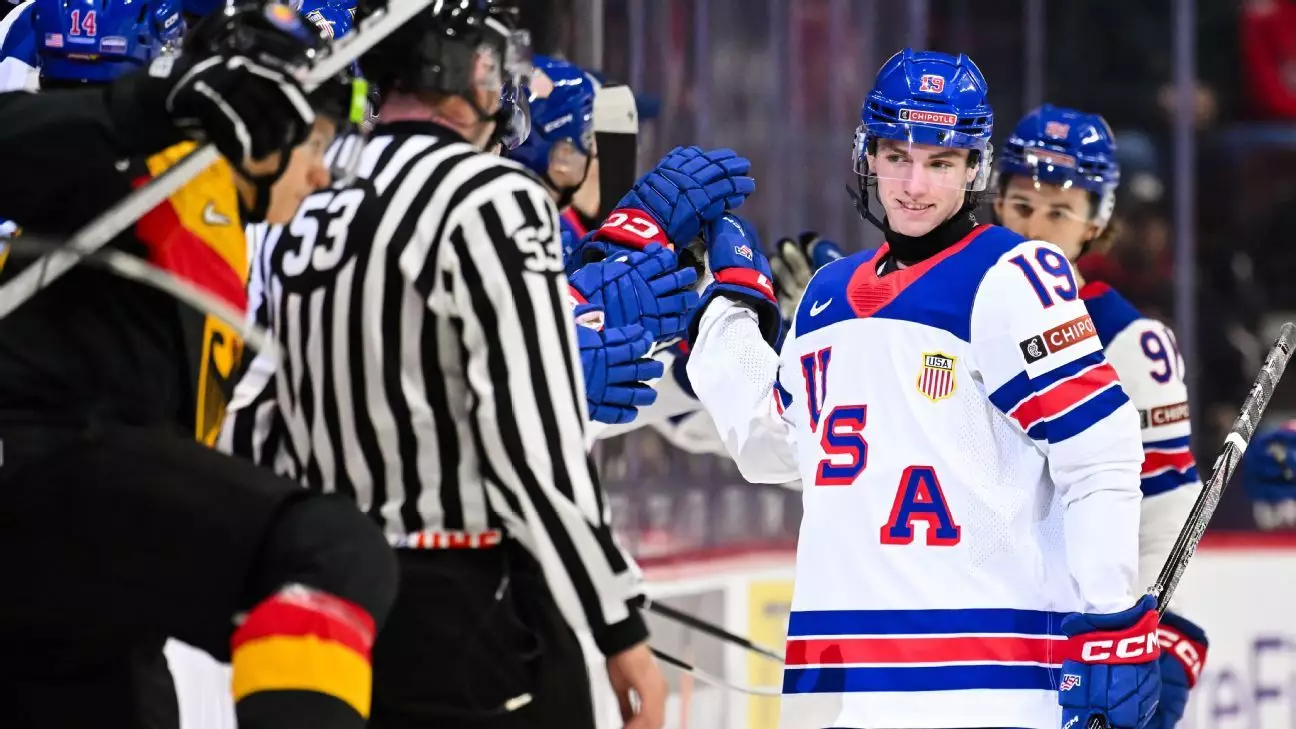The Symphony of Celebration: Analyzing the Evolution of Goal Songs in the IIHF World Junior Championships
There’s something magical about the IIHF World Junior Championships that extends beyond the ice rink. While these championships have always been a showcase for emerging ice hockey talents, they’ve transformed into grand cultural events over the years. One of the most fascinating aspects of this transformation is the selection of goal songs, which adds an extra layer of excitement to every goal scored. Especially in Canada, these songs have become an essential part of the tournament’s atmosphere, creating a rhythmic backdrop that enhances the fans’ experience.
As we sit on the edge of our seats, waiting for those thrilling moments on ice, goal celebrations have evolved into musical showcases. These songs not only bring joy but also invoke nostalgia among fans. At the 2025 World Juniors, for instance, when “Live is Life” by Opus was chosen as a goal song, it sparked a wave of anticipation and diverse reactions. Fans were quick to compare it to previous crowd-pleasers like DJ Kool’s “Let Me Clear My Throat” and Blur’s “Song 2”. It’s fascinating to see how much emotional investment people place not just in the game but also in these musical choices, leading to a dynamic interaction between players and their supporters.
Music has this incredible ability to bring people together, and nothing exemplifies this more than Team USA’s choice for their 2025 goal song—Lynyrd Skynyrd’s “Free Bird”. This classic rock anthem wasn’t just picked for its catchy tune but for its deep connection to the players’ personal experiences. Zeev Buium, a defenseman from the University of Denver, played a pivotal role in this decision. He shared how informal moments like bus rides often lead to significant team traditions. This highlights an underlying narrative of unity where music helps reinforce the social ties that are crucial for teamwork and success.

The choice of “Free Bird” wasn’t just about choosing a popular song; it was about capturing a shared experience that embodies the team’s spirit. Opting for the 4:45 mark of this nine-minute classic speaks volumes about their thought process. The song’s mellow start building up to intense instrumentation mirrors an ice hockey match’s progression—from a slow start to electrifying highs.
Key Takeaways
- Goal songs enhance the atmosphere and connect emotionally with fans.
- Team USA’s choice reflects personal experiences and team unity.
- Music transforms individual triumphs into collective celebrations.
The Reception of Goal Songs: More than Just a Tune
The excitement surrounding Team USA’s use of “Free Bird” during their opening game against Germany was palpable. The song played multiple times as players and fans celebrated together, turning it into an anthem for unity and triumph. Players like Cole Hutson praised it as one of the tournament’s best, illustrating how music strategically intertwines athletes’ performances with fan engagement. This shared enthusiasm turns individual successes into collective experiences, ensuring lasting memories long after the tournament ends.

Music has this unique ability to elevate gameplay, transforming moments of success into climactic soundtracks. As players gear up for subsequent games leading to the championship match on January 5, 2025, the blend of skill and melody continues to drive their ambitions. The shared hope of hearing “Free Bird” echo once again resonates deeply with fans and players alike, proving that sports culture transcends mere athleticism—it’s intertwined with emotional responses and shared experiences that resonate globally.
Final Thoughts
In conclusion, as the IIHF World Junior Championships continue to captivate audiences worldwide, goal songs emerge as cultural threads weaving through hockey’s rich tapestry. They represent both sporting aspirations and fan unity. This tradition highlights how music intersects with sports, creating richer experiences for everyone involved. Whether it’s catchy tunes reverberating through stadiums or personal stories tied to specific songs, one thing remains clear: in hockey’s world and among its young stars, goal celebrations transcend mere scoreboard counts—it’s an evolving narrative told one song at a time.
ice hockey
goal songs
IIHF World Junior Championships
sports culture


Leave a Reply